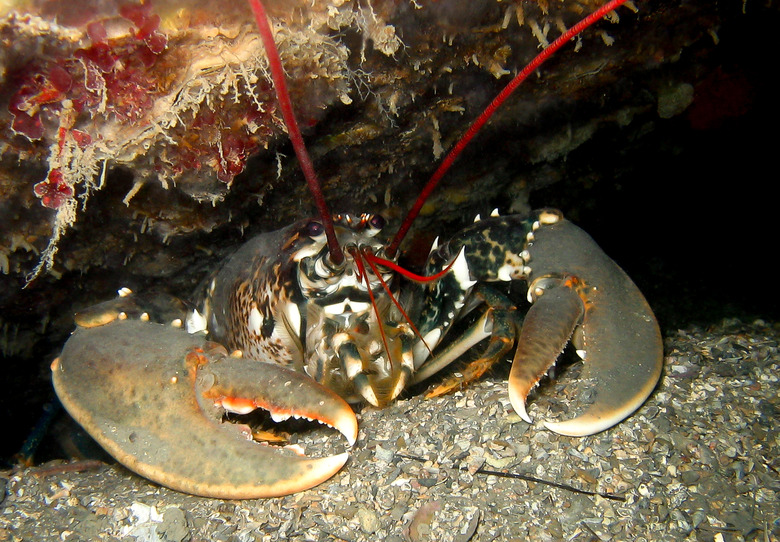What Are The Different Kinds Of Lobsters?
Lobsters are invertebrate crustaceans found in the shallow zones of the ocean, particularly along the Continental Shelf. Most lobsters hide in the crevices of rocks during the day and go out at night, eating plants, fish, and other small creatures. Lobsters are decapods, meaning they have 10 legs for walking in addition to any claws. There are many different species of lobster, but they fall into two main kinds: true (clawed) and false (spiny).
Clawed Lobsters
Clawed Lobsters
The clawed lobster is what comes to mind when thinking of lobsters. These lobsters have five sets of walking legs and three sets of claws. The first set of claws is much larger than the following two sets. Clawed lobsters are important for the seafood industry, because they have become the expected type of lobster. Clawed lobsters include the American lobster and the European lobster.
Reef Lobsters
Reef Lobsters
Reef lobsters also have claws but are considered to be separate from clawed lobsters. Reef lobsters only have the set of claws on the first set of appendages and not on the subsequent pairs.
Spiny Lobsters
Spiny Lobsters
Spiny lobster, or rock lobster, is the broad category for lobsters that do not have claws on the front of the body. They are instead distinguishable because of the over-sized, thick antennae that give them the "spiny" appearance. Spiny lobsters are most known for their "march," the mass migration they do after rainstorms.
Slipper Lobsters
Slipper Lobsters
Slipper lobsters also have the enlarged antennae and lack the front claws. They are flatter than the other lobsters and look like their faces have been smashed. Slipper lobsters often bury themselves in the mud during the day, instead of hiding in holes like the other lobster types. Because of this, they tend not to be as desirable for food.
Furry Lobsters
Furry Lobsters
Furry lobsters have large antennae, though not as large as the spiny lobsters. Furry lobsters are thus named because of the protrusions on their body that make it appear to be covered in hairs. Furry lobsters are small and manage to avoid most lobster traps.
Squat Lobsters
Squat Lobsters
Squat lobsters are not really a lobster at all. They resemble the clawed lobsters but are more closely related to crabs and hermit crabs. Squat lobsters live in crevices, though they have been known to use their claws to dig in the sand for food.
Cite This Article
MLA
Hippler, Megan. "What Are The Different Kinds Of Lobsters?" sciencing.com, https://www.sciencing.com/different-kinds-lobsters-7842288/. 13 March 2018.
APA
Hippler, Megan. (2018, March 13). What Are The Different Kinds Of Lobsters?. sciencing.com. Retrieved from https://www.sciencing.com/different-kinds-lobsters-7842288/
Chicago
Hippler, Megan. What Are The Different Kinds Of Lobsters? last modified March 24, 2022. https://www.sciencing.com/different-kinds-lobsters-7842288/
